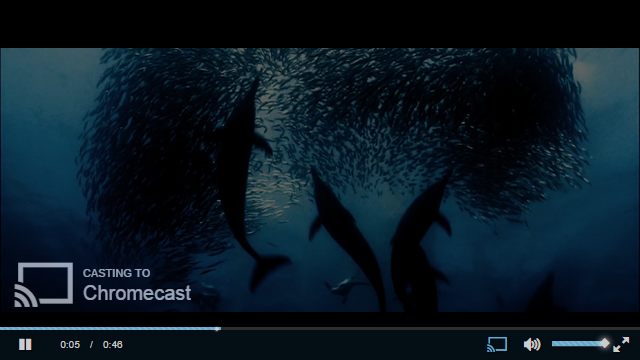VideoJS Chromecast Plugin
Displays a Chromecast button in the control bar. The button is only shown if the Google Cast extension is installed and a Chromecast is currently available.
Getting started
NOTE: The Chromecast Plugin won't work if you open the index.html in the browser. It must run on a webserver.
- Add
data-cast-api-enabled="true"in your<html>Tag. - Include
videojs.chromecast.cssandvideojs.chromecast.jsin the<head>. - Initialize the VideoJS Player with the Chromecast Plugin like the configuration example.
- When a Chromecast is available in your network, you should see the cast button in the controlbar.
If you are not able to configure the player, check out the demo directory.
Configuration example
videojs("my_player_id", {
plugins: {
chromecast: {
appId: "AppID of your Chromecast App",
metadata: {
title: "Title",
subtitle: "Subtitle"
}
}
}
});
Contributing
Ensure that you have installed Node.js and npm
Test that Grunt's CLI is installed by running grunt --version. If the command isn't found, run npm install -g grunt-cli. For more information about installing Grunt, see the getting started guide.
- Fork and clone the repository.
- Run
npm installto install the dependencies. - Run
gruntto grunt this project.
You can test your changes with the included demo
- Run
node demo-server.jsto start the server. - See
http://localhost:3000/demo/in your browser.


